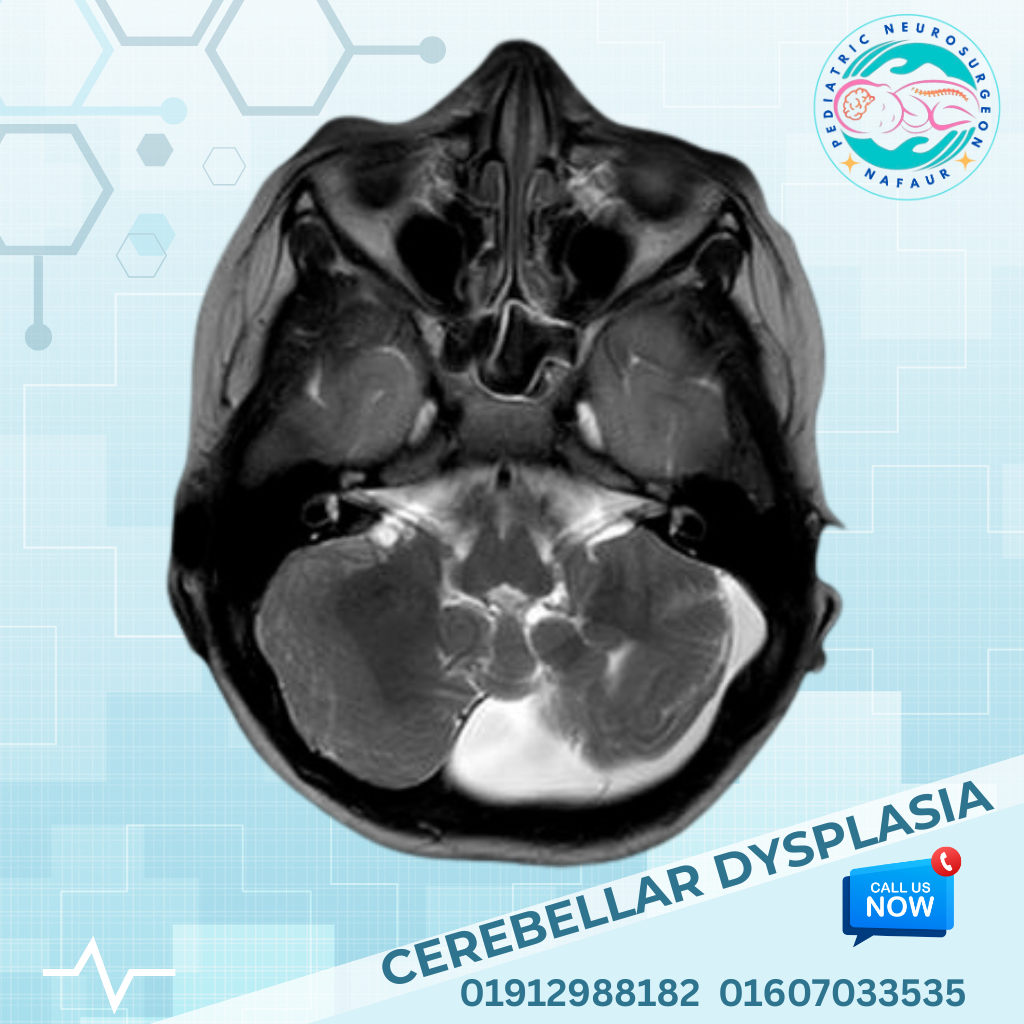Cerebellar dysplasia
Cerebellar dysplasia
Cerebellar Dysplasia is a type of congenital brain malformation where the cerebellum, the brain region responsible for balance, coordination, and fine motor control, develops abnormally. It may involve disorganized foliation, asymmetric growth, hypoplasia (underdevelopment), or abnormal tissue structure in the cerebellar hemispheres or vermis. This condition may be isolated or part of a broader neurodevelopmental or genetic syndrome. Children with cerebellar dysplasia often present with delayed motor development, balance issues, ataxia, nystagmus, and sometimes intellectual disability or seizures. 🌍 Cerebellar Dysplasia in Bangladesh: A Rising Concern In Bangladesh, cerebellar dysplasia often goes undiagnosed or misdiagnosed as general motor delay, hypotonia, or cerebral palsy due to limited awareness among healthcare providers and lack of access to early brain MRI scans. Many affected children are first seen by pediatricians or physiotherapists before being referred to pediatric neurosurgeons. As advanced neuroimaging becomes increasingly available at tertiary care centers like NINS, and with the expert guidance of professionals like Dr. Md. Nafaur Rahman, early diagnosis and effective management of cerebellar dysplasia is becoming more achievable across Bangladesh. 🧠 Types and Associated Conditions Cerebellar dysplasia may be: Focal or generalized: affecting specific lobules or the entire cerebellum Symmetric or asymmetric Isolated or associated with other anomalies, such as: Joubert syndrome Dandy-Walker malformation Chiari malformation Pontocerebellar hypoplasia Ciliopathies and chromosomal abnormalities ⚠️ Causes and Risk Factors Genetic mutations (often de novo or autosomal recessive) Ciliopathies (e.g., Joubert syndrome) Intrauterine infections (e.g., CMV, Zika virus) Vascular disruptions during fetal brain development Chromosomal abnormalities (e.g., 1q41q42 deletion, trisomy 13) Metabolic disorders In many cases, no definitive cause is found, and the condition is considered sporadic. 🧒 Clinical Features and Symptoms Children with cerebellar dysplasia may show: Ataxia (unsteady walking or sitting) Delayed milestones (especially walking and sitting) Hypotonia (floppy muscle tone in infants) Tremors or poor coordination Speech difficulties (dysarthria) Nystagmus (abnormal eye movements) Seizures (in some cases) Cognitive and behavioral issues in associated syndromes The severity of symptoms depends on whether the dysplasia is focal, diffuse, or part of a larger syndrome. 🔍 Diagnostic Evaluation 1. MRI Brain – Gold Standard Reveals cerebellar structural abnormalities: abnormal size, shape, or foliation May identify other associated malformations (e.g., corpus callosum abnormalities, brainstem hypoplasia) 2. EEG Conducted if the child has seizures 3. Genetic Testing Useful in syndromic cases to identify mutations linked with ciliopathies, chromosomal deletions, or metabolic syndromes 4. Developmental and Neurological Assessment Conducted by pediatric neurosurgeon, neurologist, and developmental specialists 🛠️ Treatment and Neurosurgical Considerations There is no surgical correction for cerebellar dysplasia itself, but neurosurgical interventions may be required in certain cases, especially when associated with: Hydrocephalus (requiring VP Shunt or ETV) Chiari malformation (requiring decompression surgery) Intractable epilepsy (requiring seizure surgery evaluation) Additionally, comprehensive multidisciplinary care is essential for long-term management. Key Areas of Management: Physiotherapy: for balance, posture, and motor skills Speech and language therapy Occupational therapy Special education programs for cognitive or learning disabilities Seizure control with antiepileptic drugs if necessary Genetic counseling for affected families 🔄 Prognosis Prognosis varies significantly: Isolated mild cerebellar dysplasia: often leads to near-normal development with therapy Syndromic or severe bilateral cases: may result in lifelong motor and intellectual challenges Early intervention, therapy, and family support improve developmental outcomes 👨⚕️ Why Consult Dr. Md. Nafaur Rahman? Pioneer in pediatric brain malformations and neurodevelopmental disorders in Bangladesh Expert in interpreting advanced neuroimaging, especially cerebellar and posterior fossa anomalies Provides early diagnosis, intervention planning, and long-term follow-up Operates at National Institute of Neurosciences & Hospital (NINS) – a national referral center for pediatric neurosurgery Leads multidisciplinary care at the Bangladesh Paediatric Neurocare Centre 📞 Contact for Specialized Pediatric Brain Evaluation Dr. Md. Nafaur Rahman Assistant Professor, Department of Pediatric Neurosurgery, NINS Chief Consultant, Bangladesh Paediatric Neurocare Centre 📞 For Serial/Appointment: 01912988182 | 01607033535 🌐 Website: www.neurosurgeonnafaur.com












